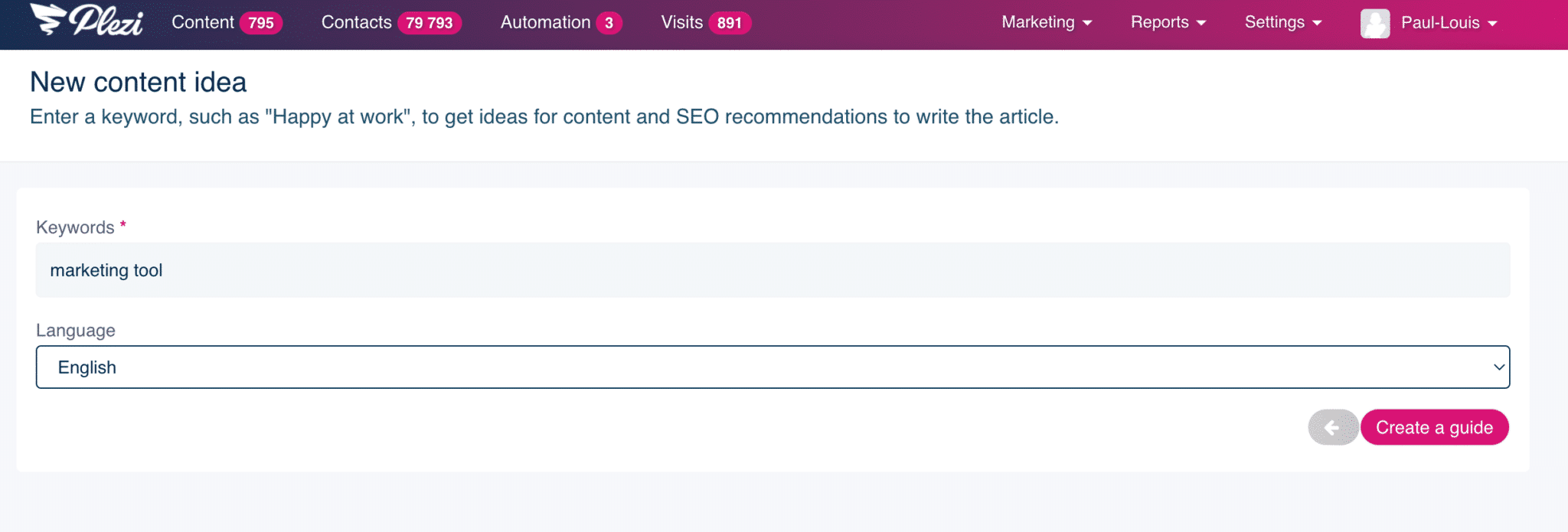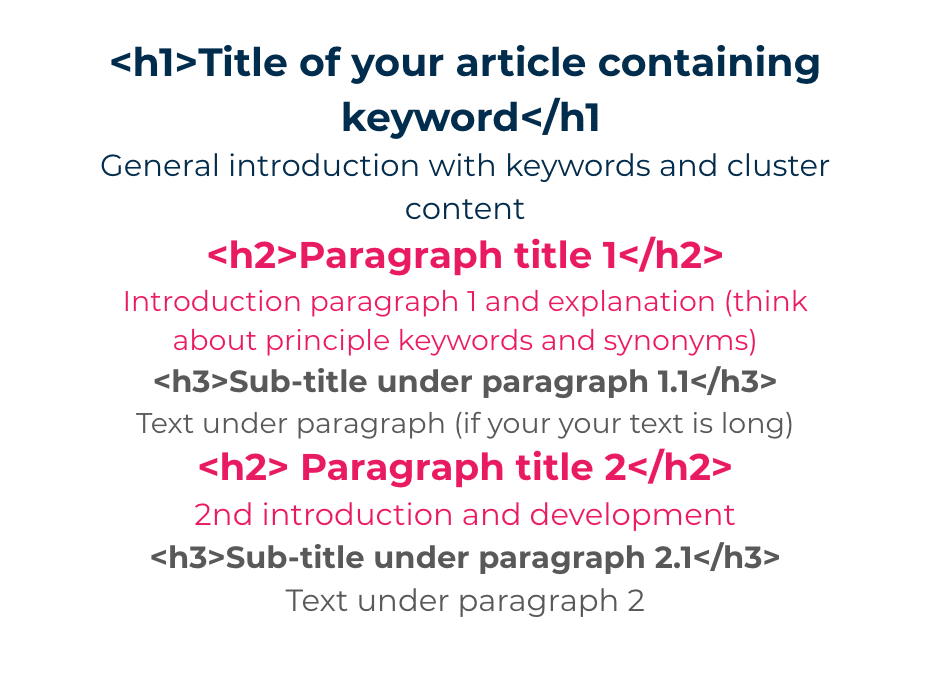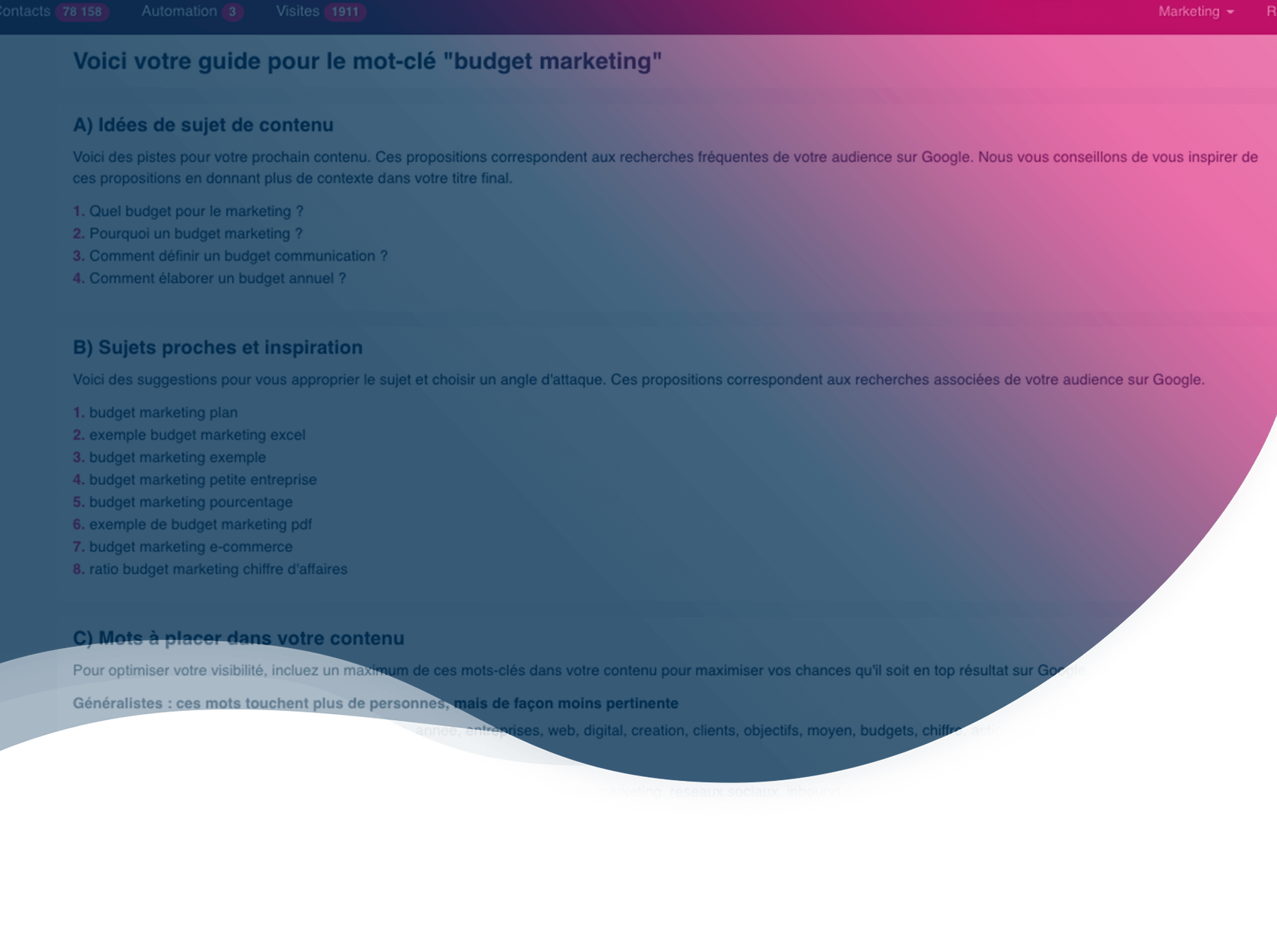If you want to attract qualified traffic to your website, you need to create content. But what content should you create in order to be seen by potential customers? How can you make sure your content appears in search results if you’re not an SEO expert? To give you some help, Plezi has created a new feature called “content ideas”.
This lets you create blog posts that are optimized for SEO so you can stand out from your competitors and attract qualified traffic to your website.
Never sit staring at a blank page again
At Plezi, our core business is marketing automation. Plezi lets you attract visitors to your website, convert them into leads, and move them forward in the buying cycle so you can pass on qualified leads to your sales team.
Content has an important role to play, because it is the starting point of any B2B marketing strategy. By publishing content, you will attract visitors to your website. By regularly sending content to leads (using the process known as lead nurturing) you can move them forward in the buying cycle and at the same time shorten your sales cycle.
One of your main challenges as a marketer is to create high quality content.
To do so, two conditions need to be met:
- Firstly, to ensure your content is relevant to your potential customers, you need to know what problems they face and what their goals are. This shouldn’t be too difficult if you have a good knowledge of your buyer personas.
- You also need to ensure that prospects can find your content online. For that to happen, it needs to rank well in search engines. You need to make sure that content appears near the top of search results when prospects search for the keywords that interest them.
But how can you find good topic ideas for blog posts when you’re not an SEO expert? How can you ensure your content ranks well in search results so that it stands out from the content created by your competitors?
To help you address these issues, we’ve partnered with one of the most effective SEO tools on the market, YourTextGuru (rated 9.4 on the logiciels.pro website), to develop a new feature called “Content ideas”. Now you can manage all aspects of your marketing strategy with Plezi: email marketing, lead nurturing, content, and SEO.
How “content ideas” work
“Content ideas” is very easy to use. Just enter two pieces of information and watch it work its magic!
- Enter your desired keyword (e.g., “marketing tool”)
- Enter your language
- Click on “create a guide”

This guide has three parts:
A) Topic ideas for content
“Content ideas” provides you with a list of topic suggestions involving the keyword you’ve entered based on popular search queries for this keyword on Google. It lists the questions asked by internet users who have entered this keyword. These are ideas for blog posts that will potentially attract search traffic to your website.

- Use them to organize a single blog post
- Create four blog posts that each answer one of the questions, then link them together to create a content cluster.
This is a great way to generate new content ideas and easily make sure your editorial calendar is full.
B) Related topics and inspiration
This section provides you with a list of phrases that indicate related searches on Google. These give you information about the search intentions of users for the keyword you entered earlier and help you clarify the angle of your blog post.

C) Keywords to include in your content
It’s not always easy to know which keywords to include in a blog post to ensure that it ranks well in search results.
This third section helps you by indicating what keywords you should include in blog content. These are all the words you should think about including in your post to ensure it is as comprehensive as possible. By doing this, you’ll increase the chances of your post being noticed by Google’s algorithm and that it ranks highly in search results.
These keyword ideas are classified into three types:
- general: these keywords are quite broad; they’ll reach a larger number of people, but they will be less relevant to their search queries.
- mid-range: these keywords have a bit more context.
- specific: these words are more specific and will enable you to reach a more specific audience as a result.
So how should you use these keywords? You don’t need to include each one of them ten times in your post. This is called keyword stuffing and could mean that your content is penalized by Google. Instead, it’s best to use them in strategic locations. For example, in blog post titles, the alt tags of images, and in the meta description of your post. If you’re working with a copywriter, remember to include them in your brief for posts optimized for SEO.
Below is a small diagram to help you place keywords in different sections of your content.








